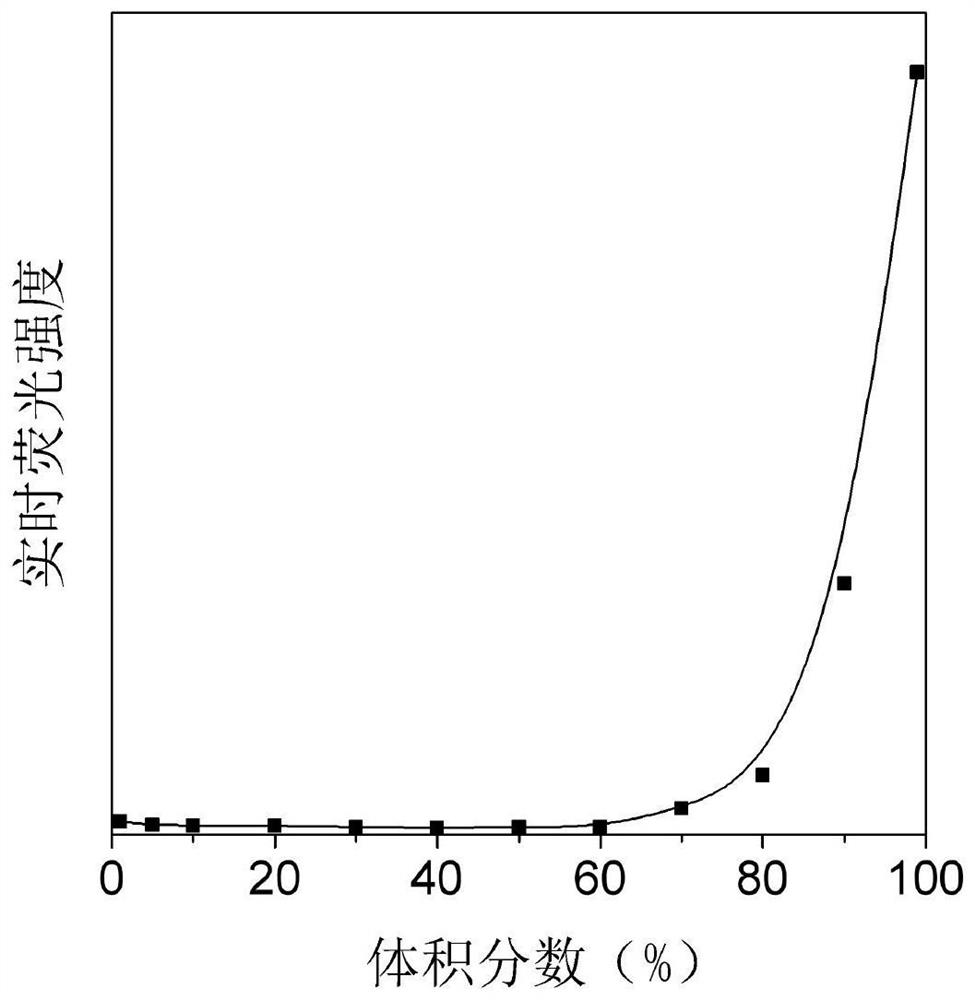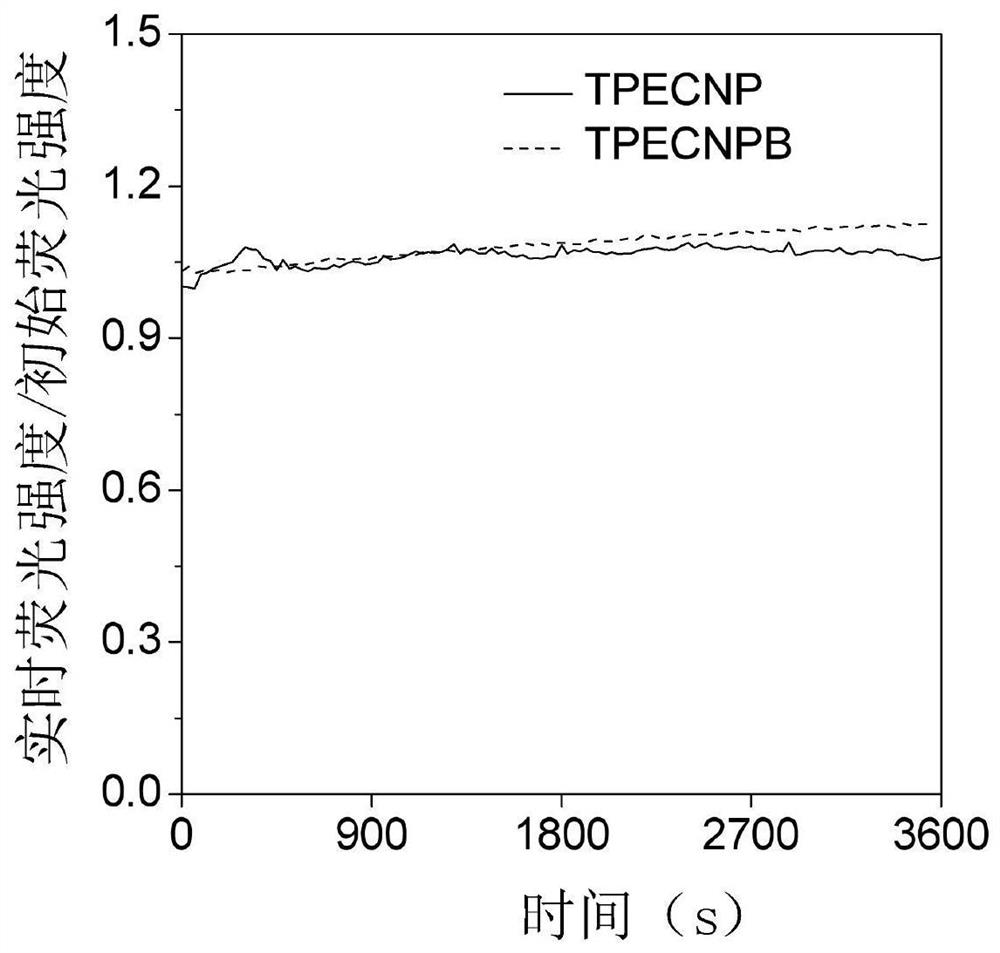A fluorescent probe with both hydrogen peroxide detection and photodynamic killing of cancer cells and its preparation method and application
A fluorescent probe and photodynamic technology, applied in photodynamic therapy, chemical instruments and methods, fluorescence/phosphorescence, etc., can solve the problems of no photodynamic killing cancer cell activity, limited application range, etc., and achieve strong light stability Anti-photobleaching ability, low background interference, and easy-to-operate effect
- Summary
- Abstract
- Description
- Claims
- Application Information
AI Technical Summary
Problems solved by technology
Method used
Image
Examples
preparation example Construction
[0048] The present invention also provides a method for preparing the fluorescent probe described in the above technical solution, comprising the following steps:
[0049] (1) Mixing a compound having a structure shown in formula II, 4-(bromomethyl)phenylboronic acid and a first organic solvent for a salt-forming reaction to obtain a compound having a structure shown in formula III;
[0050]
[0051] Wherein, in formula II and formula III, R is hydrogen, alkyl, alkoxy, N,N-dimethyl, N,N-diethyl or N,N-diphenyl;
[0052] (2) Mix the compound having the structure shown in formula III with malononitrile, an organic base and a second organic solvent, and perform Knoevenagel reaction under a protective atmosphere to obtain a fluorescent probe having the structure shown in formula I.
[0053] In the present invention, the compound having the structure shown in formula II, 4-(bromomethyl)phenylboronic acid and the first organic solvent are mixed for a salt-forming reaction to obta...
Embodiment 1
[0075] The following formula 1 is the chemical reaction formula for preparing a fluorescent probe with both hydrogen peroxide detection and photodynamic killing of cancer cells in this embodiment:
[0076]
[0077] (1) Compound 1 (497.6 mg, 1.00 mmol), 4-(bromomethyl) phenylboronic acid (257.8 mg, 1.20 mmol) and toluene were mixed, refluxed at 130 ° C under the protection of nitrogen, and the reaction progress was monitored with a TLC plate Until the complete disappearance of compound 1, the salt-forming reaction was completed; then cooled to room temperature, anhydrous ether was added to the resulting reaction solution, and allowed to stand for 30 minutes, wherein the volume ratio of the reaction solution to anhydrous ether was 1:3, and then suction filtered to obtain Solid 370.5mg, the calculated yield is 52%;
[0078] Gained solid is carried out NMR characterization, the result is as follows:
[0079] 1 H NMR (400MHz, DMSO-d 6 )δ9.34(d, J=6.3Hz, 2H), 8.32(d, J=6.2Hz, ...
Embodiment 2
[0117] Compound 1 is replaced by the compound shown in the following formula II-2, and other conditions are the same as in Example 1,
[0118]
[0119] The obtained product was characterized by NMR, and it can be known that the obtained probe is the compound shown in I-2.
PUM
 Login to View More
Login to View More Abstract
Description
Claims
Application Information
 Login to View More
Login to View More - R&D
- Intellectual Property
- Life Sciences
- Materials
- Tech Scout
- Unparalleled Data Quality
- Higher Quality Content
- 60% Fewer Hallucinations
Browse by: Latest US Patents, China's latest patents, Technical Efficacy Thesaurus, Application Domain, Technology Topic, Popular Technical Reports.
© 2025 PatSnap. All rights reserved.Legal|Privacy policy|Modern Slavery Act Transparency Statement|Sitemap|About US| Contact US: help@patsnap.com



